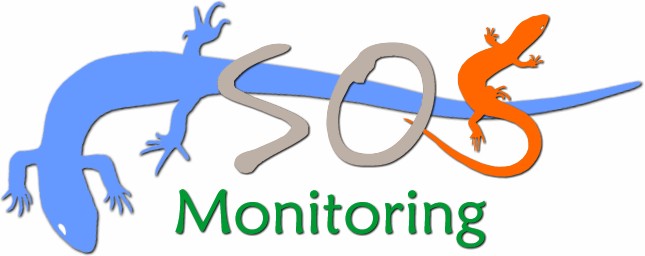|
|||||||||||||
Monitoring Skinks In addition to knowing where skinks are in Manitoba, we need to know how their populations are doing. Are the numbers of skinks stable, increasing or decreasing? Are they moving into new areas or out of others? How are they doing in light of changes to their environment? Have direct conservation efforts had the desired effects on skink numbers? To answer these kinds of questions we need to check up on the skinks on a regular basis; we need ongoing monitoring programs. Think of monitoring skinks, or any wildlife population, in another way. You wouldn't run a business by looking in your stock room once, then selling product for years and assuming you always had more stock in the back. No, you'd keep close tabs on your inventory, closely watching what comes in and goes out. Well, we need to do that with our natural heritage, too, especially for species like the skink that we know are in trouble.
Censusing or indexing? Should we try to get accurate population estimates for areas of skink habitat? Well, that would be nice, but it's probably not practical. Conservation researchers are trying to estimate actual population levels in some cases, but that can be pretty labour intensive. What's really needed is an index to population levels; how are the skink numbers doing relative to what's been seen in the past? This is where monitoring programs and citizen science come into play. Skink Monitoring Protocol A standardized ongoing monitoring program will let us know how well the skinks are doing and whether efforts aimed at helping them are being successful. Here's a basic guide to monitoring skinks on your land: Download the Preliminary Skink Monitoring Protocol (53 Kb PDF). We are developing a more advanced protocol, which we will post at a later date. In the mean time, keep sending in your skink sightings (go the the Report a Sighting page). Every sighting is another point on the map and another piece in the puzzle of understanding skinks in Manitoba. |
|||||||||||||
Citizen Science in Action! Gathering formal information, or data, on plants and animals in nature was once thought to be something just for university researchers and government biologists. But, hey, why should they have all the fun! Citizen science is an emerging discipline where the general public gets involved in data gathering, and researchers benefit from having huge numbers of eyes and ears collecting information. Check out some of these links to some exciting citizen science projects:
Can citizen science help skinks in Manitoba? The northern prairie skink is precisely the kind of critter that can benefit from citizen science. By their very nature they are cryptic critters - they are hard to find. Sure, you can send out a team of experts to look for skinks on a site, but chances are not good that they will find them on any given day. And who knows the land best and has the best chance of actually seeing skinks? That's right . . . the people that live there! With your help, we can build the SOS website evolve into a formal citizen science skink monitoring project. |
|||||||||||||
|
|
||||||||||||

